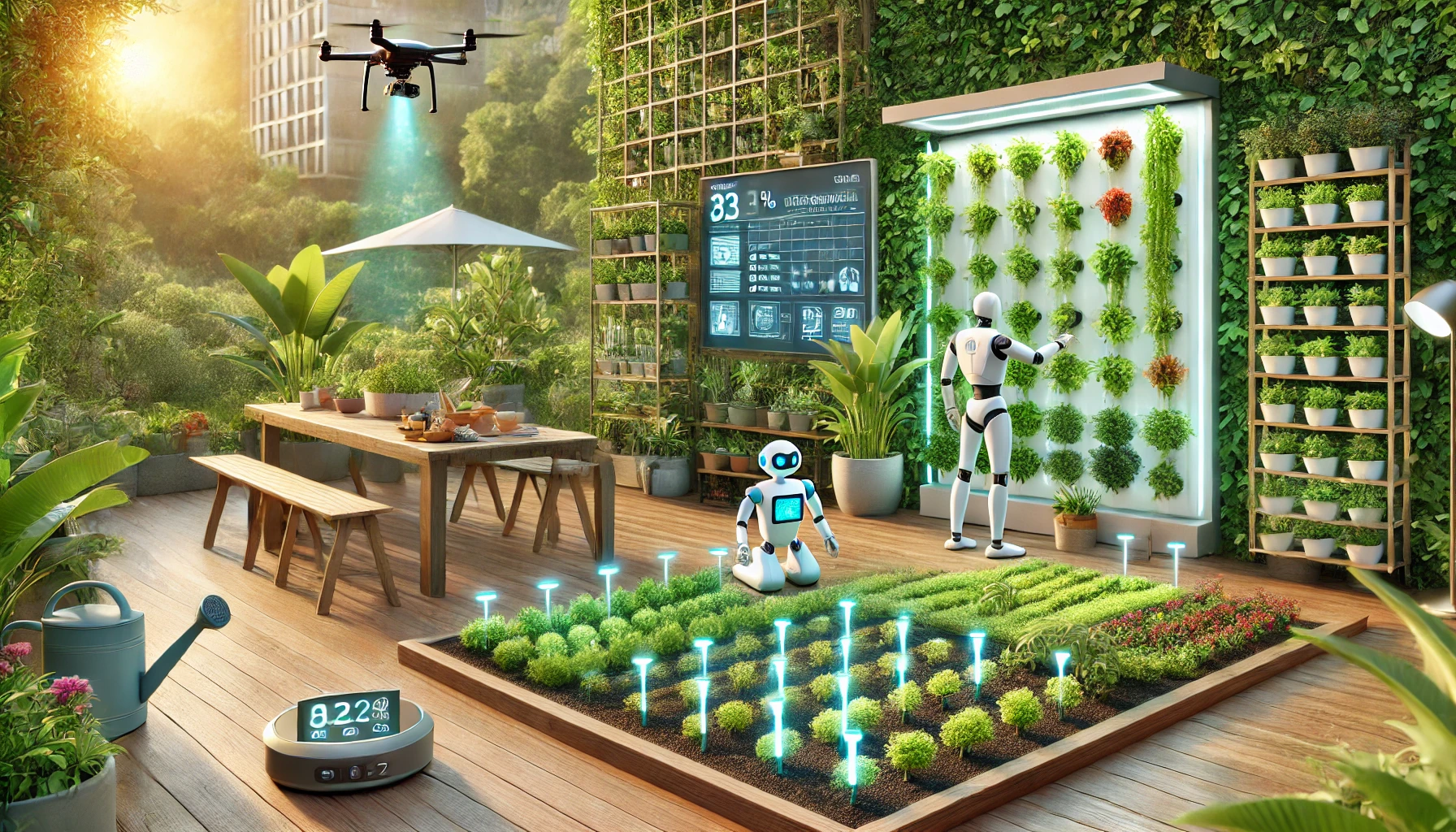Gardening has always been an activity that requires time, dedication, and knowledge about soil, climate, and specific plant care. However, with technological advancements, this practice is becoming increasingly efficient, accessible, and sustainable. Smart sensors, automated irrigation, artificial intelligence, and even drones are changing the way we care for gardens.
In this article, we will explore how technology is revolutionizing modern gardening and how you can take advantage of these innovations to optimize plant care.
1. Smart Sensors for Plant Monitoring
One of the biggest challenges in gardening is knowing exactly what plants need. Many people either overwater or leave their plants without water for too long. Fortunately, smart sensors have emerged to solve this problem.
How do smart sensors work?
Soil moisture, temperature, and light sensors can be placed in gardens or pots. They collect real-time information and send data to mobile apps, allowing gardeners to make informed decisions.
Advantages of smart sensors
- Accurate monitoring of soil moisture levels
- Prevention of overwatering or underwatering
- Reports on light and nutrient needs
- Integration with automated irrigation systems
Some advanced sensors even send alerts when the plant needs attention, making plant care much more efficient.
2. Automated Irrigation Systems
Another major advancement in modern gardening is smart irrigation. Automated systems ensure that plants receive the exact amount of water at the right time, saving resources and improving garden health.
How do automated irrigation systems work?
These systems can be programmed to release water at specific times or based on data collected by moisture sensors. More advanced models are connected to the internet and can be controlled through apps.
Benefits of automated irrigation
- Reduction of water waste
- Increased efficiency in plant nutrition
- Automation of the watering process, saving time
- Remote control via smartphone or voice assistant
For those looking for an even more sustainable solution, there are systems that use solar energy to pump water.
3. Artificial Intelligence in Gardening
Artificial intelligence (AI) is becoming a great ally for gardeners, helping to diagnose plant problems, suggest solutions, and even predict garden growth.
How is AI being used in gardening?
Some apps use artificial intelligence to recognize pests, diseases, and nutrient deficiencies through plant photos. Additionally, software can analyze climate data and indicate the best times to water or prune plants.
Examples of AI in gardening
- PlantSnap: Identifies plants and provides care tips
- Garden Answers: Recognizes diseases and suggests treatments
- Tertill: A robot that automatically removes weeds
In the future, virtual assistants like Alexa and Google Assistant are expected to integrate even more features to assist with plant care.
4. Drones and Gardening Robots
Drones and robots are already used in large-scale agriculture, but they are also gaining popularity in home gardens.
How do drones help with gardening?
Drones equipped with thermal cameras and moisture sensors can fly over green areas and detect problems before they become severe. They also help map terrain and plan plant placement.
And what about gardening robots?
There are already robots that perform automatic pruning, remove weeds, and distribute fertilizers precisely. An example is Tertill, a solar-powered robot that eliminates weeds without needing chemical products.
These technologies not only save time but also make cultivation more efficient and sustainable.
5. Vertical Farming and Hydroponic Cultivation
With increasing urbanization, gardening needs to adapt to smaller spaces. This is where vertical farming and hydroponic cultivation technologies come in.
What is vertical farming?
Vertical farming involves growing plants on vertical structures, such as shelves or green walls. Many of these structures are automated and have smart irrigation systems.
Advantages of vertical farming
- Maximization of space usage
- Better control over climate conditions
- Reduced consumption of water and fertilizers
How does hydroponic cultivation work?
In hydroponic cultivation, plants grow without soil, only in nutrient-rich solutions. This method is highly efficient and allows for faster growth. Some hydroponic greenhouses use sensors to automatically adjust nutrient and pH levels in the water.
This type of technology is becoming increasingly popular in urban gardens and even indoors, making fresh food cultivation easier.
6. Apps to Help with Gardening
Mobile apps are great allies for modern gardening. They help identify plants, schedule watering, and monitor plant growth.
Best gardening apps
- PlantNet: Plant identification
- Gardenize: Garden organization and watering reminders
- Moon & Garden: Gardening based on lunar phases
- Vera: Personal assistant for plant care
These apps make plant care more accessible, especially for beginners.
7. The Future of Gardening with Technology
Technological advancements promise to make gardening even more automated and sustainable. In the future, we can expect:
- Irrigation systems that learn from plant behavior
- Use of nanotechnology to strengthen plant health
- Even more autonomous robots for pruning and harvesting
- Full integration between smart homes and gardens
With these innovations, even people with no gardening experience will be able to cultivate plants easily, making gardening accessible to everyone.
Conclusion: Technology is Transforming Gardening
Modern gardening is undergoing a true revolution thanks to technology. Smart sensors, automated irrigation, artificial intelligence, drones, and gardening robots are making plant cultivation more efficient and sustainable.
Whether for home gardens or urban farming, these innovations offer convenience and resource savings. The future of gardening will be increasingly technological, making life easier for gardeners and promoting a greener world.
If you haven’t yet explored these technologies, now is the time to start! Your garden – and the planet – will thank you. 🌱🌎

